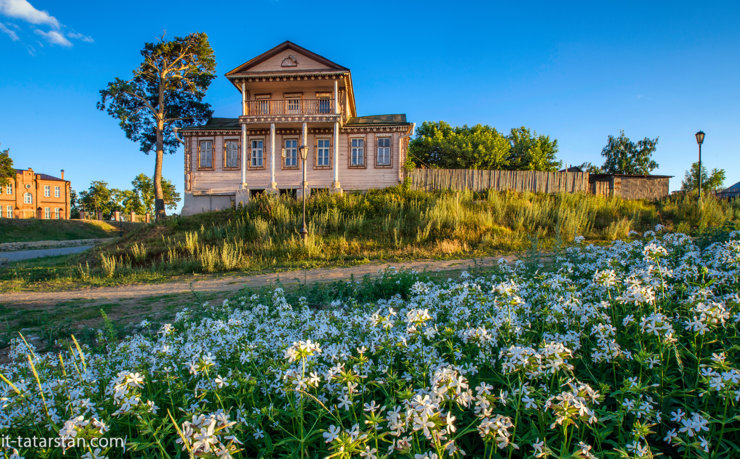Sights
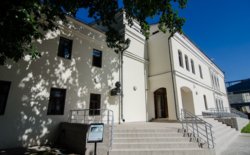 A.M.Gorky and F.I.Chaliapin Museum
Temples
A.M.Gorky and F.I.Chaliapin Museum
Temples
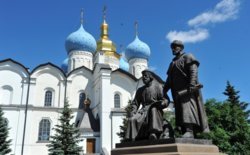 Annunciation Cathedral
Museums
Annunciation Cathedral
Museums
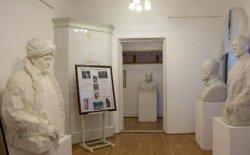 Baki Urmanche Museum
Parks and walks
Baki Urmanche Museum
Parks and walks
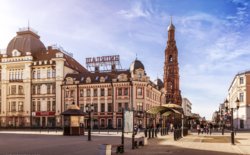 Baumana Street (Ulitsa Baumana)
Outside Kazan
Baumana Street (Ulitsa Baumana)
Outside Kazan
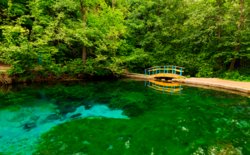 Blue Lakes
Parks and walks
Blue Lakes
Parks and walks
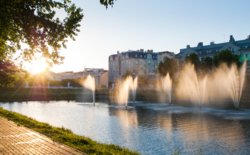 Chernoye Ozero Park
Museums
Chernoye Ozero Park
Museums
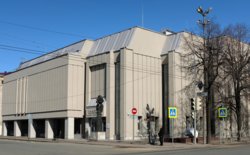 Contemporary Art Gallery of State Museum of Fine Arts of the Republic of Tatarstan
Museums
Contemporary Art Gallery of State Museum of Fine Arts of the Republic of Tatarstan
Museums
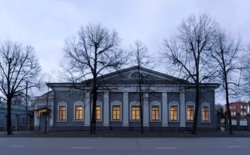 E.A. Boratynsky Museum
Theatres
E.A. Boratynsky Museum
Theatres
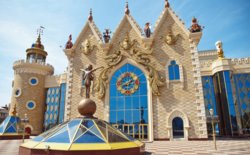 Ekiyat Tatar State Puppet Theatre
Observation Decks
Ekiyat Tatar State Puppet Theatre
Observation Decks
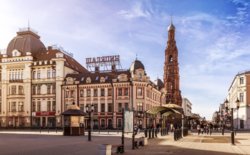 Epiphany Cathedral’s Bell Tower
Museums
Epiphany Cathedral’s Bell Tower
Museums
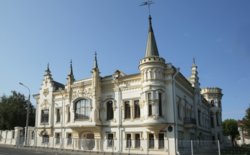 Gabdulla Tukay Literary Museum
Theatres
Gabdulla Tukay Literary Museum
Theatres
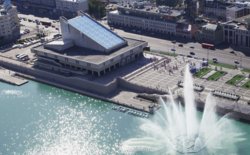 Galiaskar Kamal Tatar State Academic Theatre
Parks and walks
Galiaskar Kamal Tatar State Academic Theatre
Parks and walks
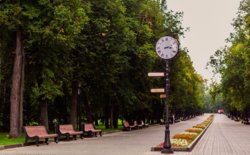 Gorky Central Park of Culture and Leisure
Outside Kazan
Gorky Central Park of Culture and Leisure
Outside Kazan
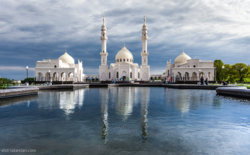 Great Bolgar
Outside Kazan
Great Bolgar
Outside Kazan
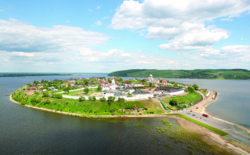 Island Town of Sviyazhsk
Museums
Island Town of Sviyazhsk
Museums
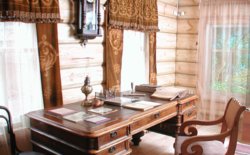 Kayum Nasyri Museum
Theatres
Kayum Nasyri Museum
Theatres
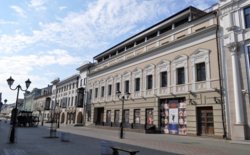 Kazan Academic Russian Bolshoi Drama Theatre named after V.I.Kachalov
Observation Decks
Kazan Academic Russian Bolshoi Drama Theatre named after V.I.Kachalov
Observation Decks
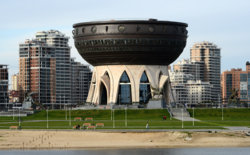 Kazan Family Centre
Open public spaces
Kazan Family Centre
Open public spaces
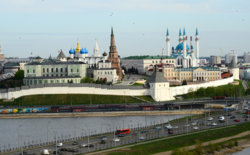 Kazan Kremlin
Theatres
Kazan Kremlin
Theatres
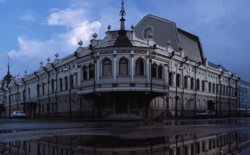 Kazan State Theatre of Young Spectators
Theatres
Kazan State Theatre of Young Spectators
Theatres
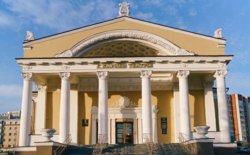 Kazan Tatar State Theatre of Young Spectators named after Gabdulla Kariyev
Museums
Kazan Tatar State Theatre of Young Spectators named after Gabdulla Kariyev
Museums
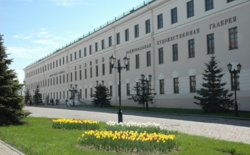 Khazina National Art Gallery of State Museum of Fine Arts of the Republic of Tatarstan
Parks and walks
Khazina National Art Gallery of State Museum of Fine Arts of the Republic of Tatarstan
Parks and walks
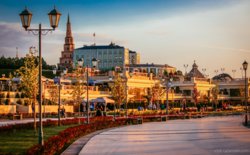 Kremlin Embankment
Temples
Kremlin Embankment
Temples
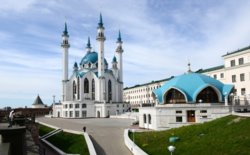 Kul Sharif Mosque
Open public spaces
Kul Sharif Mosque
Open public spaces
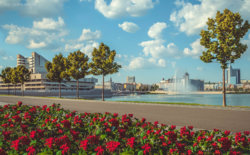 Lake Kaban
Theatres
Lake Kaban
Theatres
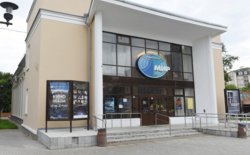 Mir Cinema
Museums
Mir Cinema
Museums
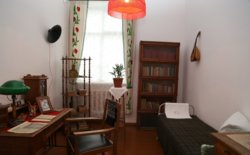 Musa Jalil Memorial Museum Apartment
Museums
Musa Jalil Memorial Museum Apartment
Museums
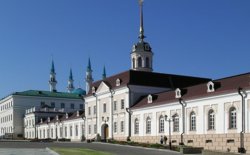 Museum of the Cannon Court
Museums
Museum of the Cannon Court
Museums
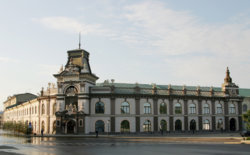 National Museum of the Republic of Tatarstan
Museums
National Museum of the Republic of Tatarstan
Museums
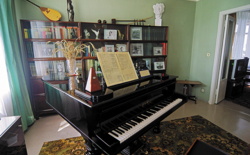 Nazib Zhiganov Memorial Museum Apartment
Open public spaces
Nazib Zhiganov Memorial Museum Apartment
Open public spaces
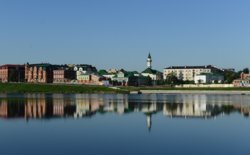 Old Tatar Settlement
Architecture
Old Tatar Settlement
Architecture
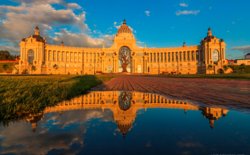 Palace of Farmers
Outside Kazan
Palace of Farmers
Outside Kazan
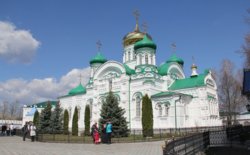 Raifa Monastery
Temples
Raifa Monastery
Temples
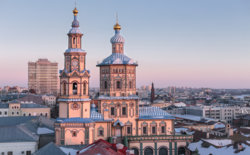 Saints Peter and Paul Cathedral
Theatres
Saints Peter and Paul Cathedral
Theatres
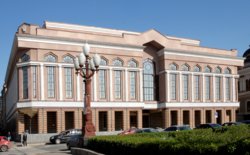 State Great Concert Hall named after Salikh Saydashev
Theatres
State Great Concert Hall named after Salikh Saydashev
Theatres
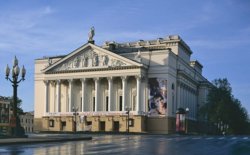 Tatar State Academic Opera and Ballet Theatre named after Musa Jalil
Theatres
Tatar State Academic Opera and Ballet Theatre named after Musa Jalil
Theatres
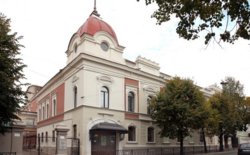 Tatar State Drama and Comedy Theatre named after K.Tinchurin
Architecture
Tatar State Drama and Comedy Theatre named after K.Tinchurin
Architecture
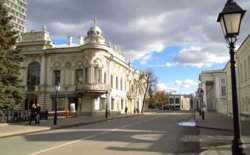 Ushkova House
Museums
Ushkova House
Museums
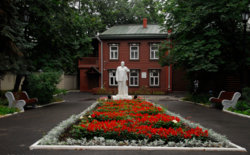 V.I. Lenin House-museum
Outside Kazan
V.I. Lenin House-museum
Outside Kazan
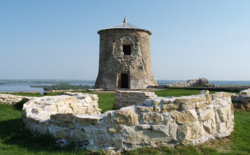 Yelabuga
Yelabuga
A.M.Gorky and F.I.Chaliapin Museum
Museums
The Literary-Memorial Museum of A.M. Gorky in Kazan tells the story of two people: the writer Maksim Gorky and opera singer Feodor Chaliapin.
The museum recreates the bakery where Maksim Gorky worked as an assistant baker from 1886 to 1887. Gorky’s personal belongings are on display in the museum as well as his autographs, publications of literary works, and Gorky-era objects.
The second floor of the museum houses the ‘Chaliapin Collection’ dedicated to the life and work of the great Russian opera singer Feodor Chaliapin, a friend of Maksim Gorky. About 4,000 exhibits are on display – original programmes of his performances, postcards, claviers, publications, photographic materials, paintings, eight gramophone records of Chaliapin’s voice (that you can listen to on a vintage gramophone), manuscripts, letters, books, and posters.
In 2016, the building was reconstructed and a new exposition was created with two sections: ‘Writer – Era – Hero. The Life and Creative Path of Maksim Gorky’ on the first floor of the building, and ‘Feodor Chaliapin and Kazan’ on the second floor of the museum.
Annunciation Cathedral
Temples
The Annunciation Cathedral is the oldest monument of Orthodox church architecture. It was founded more than 450 years ago; it survived after the heaviest fires and several reconstructions. The cathedral is located at the very heart of the Kazan Kremlin, near a small park with the monument commemorating Pskovian architects and the viewpoint.
Thanks to first President of the Republic of Tatarstan, Mintimer Shaimiev, the cathedral was fully reconstructed in 1995-2005. The cathedral was consecrated and became accessible for visitors.
Some of the incorruptible relics of the first bishop of Kazan, Abp. Gury, are kept in the cathedral.
The Annunciation Cathedral is open every day. Masses are held on public holidays.
Baki Urmanche Museum
Museums
The Baki Urmanche Museum was opened in 1999, it is both a memorial complex and an art exhibition.
The museum’s vast collection tells the story of Urmanche’s whole life: from the start of his studies at the madrasa (Islamic religious school) to getting the title of Honorary Citizen of Kazan and The Order of Friendship of Peoples.
The museum has three floors. Urmanche’s significant works of art are on display on the first floor of the museum, the second floor houses his works from the time when he experimented with forms and themes, and the third floor is devoted to the exhibition of the artist’s latest works.
In total, the Baki Urmanche Museum features over 70 works of painting, graphic art, and sculpture. This is one of the best places in Kazan where you can get acquainted with the national fine art.
Baumana Street (Ulitsa Baumana)
Parks and walks
Kazan's main pedestrian street starts at the Kremlin and ends near the Ploschad Tukaya (Tukay Square) metro station. It's often called “the Arbat of Kazan”, because the numerous restaurants, souvenir shops, and fashion boutiques attract tourists and locals.
The length of the street is almost 2 km long, and almost every building or temple located on it has its own special story. Formerly, it was called Prolomnaya because during the capture of Kazan Ivan the Terrible's cannons broke the Kremlin wall exactly from the direction of this street.
Two well-known Orthodox cathedrals – the Nikolsky Cathedral and the Epiphany Cathedral – are also located on Baumana Street. The bell tower of Nikolsky Cathedral is one of the highest bell towers in the world and can be seen even from near the Kremlin. When walking along Baumana Street, you will notice the buildings of the State Academic Russian Bolshoi Drama Theatre named after Kachalov and the National Bank of Tatarstan that contained the gold reserve of Russia during the October Revolution of 1917.
The street is also decorated with a replica of Empress Catherine II's carriage that is often surrounded by crowds of people wanting to take a picture with it. Tourists especially love the Kazan Cat Statue and the numerous fountains located throughout the length of the street. Baumana Street also has the so-called Kilometre Zero that shows distances from that point to several major cities of the world including Moscow, Rome, and Paris.
Blue Lakes
Outside Kazan
The Blue Lakes is the common name of three karst lakes in the vicinity of Kazan. The natural park includes lakes Bolshoye, Protochnoye and Maloye, as well as the protected natural area around them. The temperature in the lakes is between 4 – 6 °С both in summer and winter, which is why the lakes are so popular for cold water training and winter swimming.
Those not keen on cold water swimming will enjoy contemplative recreation and walks along the lakeside. Specifically for that purpose Lake Maloye has platforms for picnicking designed around it.
The crystal clear water that never freezes in winter attracts divers from all over Russia. The Kazan Divers Club is based right there, and they organize diving sessions both during the daytime and at night.
The lakes take their name from the remedial blue clay found at their bottom. A short distance away from the lakes is a health resort that treats a variety of diseases. The water in the lakes is so transparent that it creates the optical effect of a lens: the lake seems not more than one meter deep, although in fact it is as deep as 18 metres at some spots.
Chernoye Ozero Park
Parks and walks
The Chernoye Ozero (Black Lake) Park is located in the downtown area, in the close proximity of the Tatar State Opera and Ballet Theatre named after Musa Jalil and the main building of Kazan Federal University. This park has been recently renovated under a government programme, which is why it has the look of a very modern area and is ideal for leisurely walks.
The entrance to the park is marked by the "Lovers' Arch". It is a popular belief that if two people stand inside niches on two opposite sides of it and one of them whispers a word, the other person will hear it. This acoustic experiment is a favourite entertainment of young citizens and tourists. If you get a chance to be there, do not forget to check whether it really works.
In the centre of the park you will find an open amphitheatre and a square with a colonnade in front of it. During the warm season this is a popular venue for concerts and festivals. The park has lovely, shaded benches that can be used to escape the hustle and bustle of the city. The park also contains several well-designed playgrounds for children and an exercise equipment area.
Contemporary Art Gallery of State Museum of Fine Arts of the Republic of Tatarstan
Museums
Contemporary Art Gallery of State Museum of Fine Arts of the Republic of Tatarstan is located in the three-floored neo-brutal building constructed in by an architect G.Bakulin in 1979. This is the biggest gallery in Kazan specializing in the contemporary art, video, music, and performance.
Paintings, sculptures, graphic art drawings, photo and media artworks are presented in the exhibition area meeting the modern museum technical standards. The permanent exhibition includes works of Russian and Tatar avant-gardists V.Kandinsky, N.Goncharova, M.Larionova, A.Rodchenko, K.Chebotarev, F.Tagirov and other representatives of the first quarter of the 20th century.
E.A. Boratynsky Museum
Museums
The E.A. Boratynsky Literary Museum in Kazan is Russia’s only museum of the great Russian poet Yevgeny Boratynsky (1800-1844), a master of elegy and philosophical lyricism.
The museum is located in a family estate that belonged to three generations of poet’s descendants from 1869 to 1918. In addition to Yevgeny Boratynsky’s work, the museum also exhibits creative heritage of his great-granddaughter – Russian émigré writer and silver age poetess Olga Ilyina-Boratynskaya (1894-1991) as well as the chronicles of several generations of the Boratynsky family.
The exhibition is based on the Boratynsky family’s archive. The Golden and Silver ages of Russian literature came together under the same roof of the museum building that is full of warmth and coziness.
The museum that preserved ‘Boratynsky’s family light’ is very popular with locals and visitors alike.
Ekiyat Tatar State Puppet Theatre
Theatres
The Ekiyat Tatar State Puppet Theatre was founded in 1934. The new building of the theatre built in March 2012 has become the city’s attraction right away.
Resembling a fairy-castle, the theatre gives children an opportunity to get acquainted with art, and see the heroes of their favorite fairy-tales with their own eyes.
Plays are staged in Russian and Tatar. The repertoire of the theatre includes more than 50 international fairy-tales: Tatar, Russian. French, Oriental, Danish, English, Romanian, etc. Different types of puppets, from traditional to modern, are used in the plays.
There are two audience halls with state-of-the-art electric light and sound equipment, and spacious and light art-workshops. The theatre always takes part in the international theatre festivals, creative conferences, exhibitions, symposiums, and congresses in Bulgaria, Russia, France, Germany, Yugoslavia, USA, Netherlands, and Czech Republic.
Tickets can be purchased online or in person by visiting the theatre box office.
Epiphany Cathedral’s Bell Tower
Observation Decks
It is better to start your journey through the streets of Kazan with the impressive Epiphany Cathedral’s Bell Tower. Its height is 74 meters, so it is considered as the highest historic building of Kazan.
You will have a spectacular view of the Baumana and Peterburgskaya streets, the Savior Tower, and the Saints Peter and Paul Cathedral.
The Epiphany Cathedral’s Bell Tower was built in 1895-1897 with financial support from a famous merchant Ivan Krivonosov. At first, the Temple of the Finding of the Honorable Head of John the Baptist was located on the second floor.
A walk-through passage in the Bell Tower leads to the Epiphany Cathedral, Kazan’s functional temple.
The world-renowned Russian opera singer Fyodor Shalyapin used to sing in a church choir, when he was young. He was christened at the Epiphany Cathedral. The Shalyapin monument is located near the Epiphany Cathedral’s Bell Tower.
Gabdulla Tukay Literary Museum
Museums
The Gabdulla Tukay Literary Museum, a branch of the National Museum of the Republic of Tatarstan, was founded by the republic’s government. It was opened in 1986 to mark the 100th birth anniversary of the Tatar national poet Gabdulla Tukay, a classic of the Tatar literature.
The museum is located in one of the most beautiful buildings of the Old Tatar Settlement (Staro-Tatarskaya Sloboda), a historical residential neighborhood. The two-storey mansion, known as the ‘Shamil's House’, was built in the late 19th century, but it was thoroughly renovated in the early 20th century. Muhammad-Shafi Shamil lived in this house with his family in 1882-1906. He was the middle son of the famous Dagestan Imam Shamil and married the only daughter of one of the richest Kazan merchants.
The exhibition presents a unique set from the collection of the National Museum of the Republic of Tatarstan, which includes lifetime editions, memorial belongings and photographs of the poet, as well as personal belongings and documents owned by the poet’s inner circle – Kamil Moutygi, Fatikh Amirkhan, Akhmetgaray Khasani, Khusain Yamashev, Gabdulla Kariev, Sakhipzhamal Gizzatullina-Volzhskaya and others.
Galiaskar Kamal Tatar State Academic Theatre
Theatres
At the Galiaskar Kamal Theatre you can see authentic theatre in the local language of Tatar, as well as experience unique architecture including building with a unique roof, called the ‘gate to the Staro-Tatarskaya Sloboda’.
The theater is located in the heart of Kazan on the boarder of the historical area of the Staro-Tatarskaya Sloboda. It is symbolic, as this exact area was home to writers and poets whose work can be see seen at the theatre today.
The repertoire features notable Tatar productions, modern plays, and classics from around the world. The performances are always staged in Tatar. For spectators convenience the simultaneous translation to Russian and English is provided.
Every two years the theatre stages the International Theater Festival of Turkic Nations ‘Nauryz’ which brings together more than 500 guests and participants from Russia, Turkey, Azerbaijan, Turkmenistan, Kyrgyzstan, Kazakhstan, and other countries.
The Galiaskar Kamal Theatre is one of the best places to explore the Tatar culture.
Due to the high demand we recommend purchasing tickets in advance. Tickets can be purchased online or in person by visiting the theatre box office.
Gorky Central Park of Culture and Leisure
Parks and walks
The Gorky Park is the centre of attraction for those who enjoy active leisure and recreation, picnics or walks with children. It is located on several hills which is why it used to be called Russian Switzerland.
The park has everything one needs for leisurely time: almost one hectare of green lawns, areas with fitness equipment, a breezy forest area, coffee shops and restaurants, sculptures and a colour music fountain. The latter has special popularity with children; it's a foot-walk fountain which allows them to joyfully run between its water spouts.
Right next to the Park is the Trudovye Rezervy Stadium that has a sports gear rental service working all year round.
Great Bolgar
Outside Kazan
Founded in the 10th century, the ancient town of Bolgar was the economical, political, and cultural centre of the Volga Bulgaria.
The Bolgar Historical and Architectural Museum and Preserve is located 140 km from Kazan and is the northernmost monument of medieval Muslim architecture in the world and a unique example of Bolgar-Tatar architecture of the mid 13th – 14th centuries. In the central part of the ancient settlement you will see the preserved ruins of the Cathedral Mosque and the Great Minaret. Right next to them is the Northern Mausoleum which served as the tomb for the Volga Bulgaria noblemen. Among other ancient structures of that period are: the White and Black Chambers, the Eastern Mausoleum, and the Khan Bath.
Other open sights include the unique Museum of Bolgar Civilisation combined with the river boat station and the "Memorial Sign Commemorating Volga Bulgars Adopting of Islam in 922" where you will see the biggest printed Quran in the world. The Khan Palace, the Healer's House and trade shops, as well as the White Mosque and the Bread Museum are located behind the Southern Gates of the settlement.
The Bolgar Historical and Archaeological Complex is included on the UNESCO World Heritage List.
You can reach Bolgar from Kazan both by bus and by a river boat.
Island Town of Sviyazhsk
Outside KazanThe island town of Sviyazhsk is a place unique for its history and geographical position. It was constructed for the siege of Kazan in 1551 at the orders of Ivan the Terrible. The surprising thing is that the town was first completely built in the vicinity of Uglich, then it was dismantled into pieces with every log being marked, then taken by rafts down the Volga River and reassembled at the chosen place without a single nail. There is one building preserved from those times; the Troitskaya Church, the only monument of Russian wooden architecture of the 16th century in the Middle Volga.
The town became an island after Kuybyshev Reservoir was opened in 1956. Most of the local residents' homes were flooded, and the ancient structures only survived due to being located on a hill.
Today the island hosts country-wide music festivals, archery tournaments, culture and tourism fairs, and religious ceremonies. The beauty of the island town attracts artists and poets, many of them even choose to stay and live there. The expanse of Volga, the steep shores, the ancient churches captivate them, as well as tourists, for their peacefulness and its very special aura.
Upon seeing the island town of Sviyazhsk great Russian poet AlexanderPushkin said that it was the Buyan island and the Lukomorye from his fairy tales.
Assumption Cathedral and Monastery of the island town of Sviyazhsk is included on the UNESCO World Heritage List.
Kayum Nasyri Museum
Museums
The museum dedicated to the outstanding Tatar scholar Kayum Nasyri (1825-1902) was opened in Kazan on 2 February 2002. The museum is located in the Old Tatar Settlement (Staro-Tatarskaya Sloboda), a historical residential neighborhood. The building is a restored monument of the nineteenth-century Tatar wooden architecture. Kayum Nasyri lived here from 1887 to 1902.
The museum tells the life story of Kayum Nasyri, including historical, biographical and everyday aspects of it. Here you can also learn about the highlights and development stages of Tatar enlightenment. The materials on the nineteenth-century Tatar enlighteners such as Shigabutdin Mardzhani, Khusain Faizkhanov, Sagit Khalfin, Ibrahim Khalfin and others are on display in the museum.
A beautiful garden is laid out near the museum. Named ‘The Garden of Memory’, it is an exact replica of the garden described in the book by Kayum Nasyri, ‘Flowers and Herbs’.
Kazan Academic Russian Bolshoi Drama Theatre named after V.I.Kachalov
Theatres
Kazan Academic Russian Bolshoi Drama Theatre named after V.I.Kachalov is one of the oldest theatres in Russia founded in 1791.
The repertoire of the theatre will strike event the sophisticated spectator’s fancy. Plays of different genres, authors, and centuries are staged here. Thanks to the modern stage direction and scenery, the plays are always sold out for every performance in Kazan, and on tour.
In 2014, the building renovation was completed. Nowadays, there are two stages: small stage as a transforming space of European type single environment, and main stage as a standard modern equipped platform.
The Theatre is led by the People's artist of Russia and Tatarstan, laureate of G.Tukay state prize, and recipient of the F.Volkov Prize of the Russian Federation Government A.Slavutsky. His creative approach is based on the Vakhtang School’s traditions, with its spectacularity, irony, and technical excellence. And it impresses the audience with the narrated story, provokes emotions, makes the audience cry and laugh.
In 2019, the Theatre museum was established. The exposition is devoted to the history of the theatre from the date of its foundation to this day.
Tickets can be purchased online or in person by visiting the theatre box office.
Kazan Family Centre
Observation Decks
The Kazan Family Centre is a unique building with an unusual architectural style. It is located on the right bank of the Kazanka River opposite the Kazan Kremlin. Kazan locals call it “the bowl” because its shape resembles a bowl or copper, and that is not a coincidence. According to popular legends, the name Kazan is derived from the Tatar word meaning copper or bowl.
The roof of the Centre is one of the best observation platforms in Kazan. From here you can enjoy a magnificent view of the Kazan Kremlin and other sights; it is a popular venue for newlyweds and tourists. The platform has two levels and is located 32 metres above the ground.
Around the Family Centre are several statues of snow leopards and zilants that are supposed to guard the newly married couples from troubles and hardships. The surrounding area is full of green lawns and lanes for walking and cycling. A short walk away from the Centre you will find a boat landing where you can rent boats and catamarans.
Kazan Kremlin
Open public spaces
The Kazan Kremlin is located right at the very heart of the city, on the higher bank of the Kazanka River. It is the only surviving Tatar fortress in Russia, and it also shows some traces of the original city-planning layout of Kazan. This complex's architecture naturally combines a variety of cultures: the Volga-Bulgarian culture, the Golden Horde culture, the Medieval Kazan-Tatar culture, as well as Italian and Russian cultures.
The complex is truly a tourist gem. Seven museums are located within its walls, as well as the "leaning" Suyumbike Tower, the Spasskaya Tower, fragments of Kazan khans’ tombs and the Governor's Palace. The neighbouring Muslim Kul Sharif (Qol Sharif) Mosqueand the Orthodox Annunciation Cathedral are a prime example of peaceful coexistence of the two religions in this region. The Kremlin's sightseeing platforms offer magnificent views to the Kazanka River, the Millenium Bridge, the Palace of Farmers, the Kremlin Embankment, and the Kazan Arena Stadium.
The Kazan Kremlin was declared a UNESCO World Heritage Site in 2000.
Kazan State Theatre of Young Spectators
Theatres
The Kazan State Theatre of Young Spectators (TYS) is widely known for its repertoire. In addition to plays for kids, there is also a choice of performances for youth and adults. In general, the plays are based on literature works and raise the issues and topics which are dear to every spectator.
Famous artists, and laureates of international competitions and awards represent the troupe. They all take part in charity events and concerts.
TYS is situated in the building of the former Merchants' Assembly. The exuberant architecture of the building always attracts attention of tourists and is an excellent background for your photos.
Due to the high demand we recommend purchasing tickets in advance. Tickets can be purchased online or in person by visiting the theatre box office.
Kazan Tatar State Theatre of Young Spectators named after Gabdulla Kariyev
Theatres
The Kazan Tatar State Theatre of Young Spectators named after Gabdulla Kariyev is one of the youngest theatres in Kazan. The theatre celebrated its 30th anniversary in 2018. It was founded in 1987 as a Tatar Studio Theatre under the Ministry of Education. In 1991, it got the status of a state theatre, and took the name of the Kazan Tatar State of Young Spectators. Despite the new status, the theatre did not have its own building, and the plays were performed at schools, gymnasiums, orphanages, and village concert halls. At the end of March 2018, the troupe of the Theatre named after Gabdulla Kariyev moved to a new building (previously – Officers’ Club).
The Theatre named after Gabdulla Kariyev has been carrying out fruitful activities focused on the promotion of Tatar theatrical art among the young generation. The theatre takes part in different local and international theatre festivals. Thanks to their continuous creative process, and interesting performances, the troupe has achieved new victories, and taken prizes.
Tickets can be purchased online or in person by visiting the theatre box office.
Khazina National Art Gallery of State Museum of Fine Arts of the Republic of Tatarstan
Museums
Khazina National Art Gallery of State Museum of Fine Arts of the Republic of Tatarstan is located in the former military school building constructed by an architect P.Pyatnitsky in the first half of the 19th century. The Gallery is situated in the territory of the Kazan Kremlin, it belongs to the UNESCO World Heritage complex.
The permanent exhibition of the gallery includes the Russian and Tatar artworks of the 19-20th centuries. Individual tours and group excursions devoted to the masterpieces of a Russian-American artist N.Feshin, professors and graduates of the Kazan Art School of the 20th century, outstanding Tatar artists B.Urmanche, K.Yakupov, I.Zaripov and others are available in Russian, Tatar, English, or Turkish languages. In addition, you can visit the temporary exhibitions representing the fine arts of the peoples of Tatarstan, Russia, and the whole world.
Kremlin Embankment
Parks and walks
The Kremlin Embankment is a new sightseeing attraction in the downtown area of Kazan. It was opened in 2015 and immediately became a favourite place of leisure and recreation for both local residents and visitors of the city. It connects two very important areas for walks and recreation: the Kazan Kremlin and the Kazan National Culture Centre.
The perfectly smooth pavement of the Kremlin Embankment is ideal for roller skating or cycling. The cycle lanes are separated from the promenade area, which makes cycling much safer. The sports gear can be rented in the kiosks that are also located here.
The Embankment is a place to take the most impressive pictures: the beautiful views of the Kazan Kremlin, the Kazanka River, and its far bank with Kazan Arena Stadium and Kazan Family Centre will serve as an excellent background both during the day and at night. On the Kremlin end of the Embankment you will find a few fountains.
The Kremlin Embankment is a hot spot for good food. Restaurants of European and Asian cuisine, coffee shops, and a pancake house are open all year round.
In winter an almost one km long skating rink opens on the Embankment, as well a fairy tale ground with Ded Moroz's (Grandpa Frost's) House.
Kul Sharif Mosque
Temples
The Kul Sharif Mosque is the landmark of the Kazan Kremlin. Its turquoise minarets go up to the sky, and white marble walls have a pale pink sheen at sunset.
The mosque is named after a great Tatar public figure, sayyid Kul Sharif.
The Kul Sharif Mosque is a building of the 21st century, erected on the site of a multi-minaret mosque destroyed by the army of Ivan the Terrible during the siege of Kazan in 1552. In 2005, it was opened again in celebration of the millennium of Kazan. Its architecture is close to the original Al-Kabir cathedral mosque (13th century) in the city of Bolghar. It was a symbol of Islam in the Volga Region. Four architects worked on its design. Enterprises, sponsors and average citizens of Tatarstan donated money for the construction of the mosque.
Nowadays religious ceremonies are held in the mosque. Outstanding representatives of the Islamic culture give lectures there. Besides the main mosque building, there is a museum of Islam.
Lake Kaban
Open public spaces
This lake has been the subject of films and legends, appearing in all regional tourist guidebooks. Legend has it that on its bottom is the treasure of khans, hidden there from Russian Tsar Ivan the Terrible. Citizens love telling stories about this treasure being guarded by Su Anasy, a fairy-tale mermaid that drives any person looking for the treasure to madness.
The origin of the name Kaban has several different explanations. Some researchers assume that it is related to the legend about Khan's son Kabanbek, others think that the name appeared because there were many wild boars ("kaban" in Russian) harbouring its shores back in the day, and some people believe that the lake used to resemble a boar's head.
Scientifically speaking, it is an entire system of lakes (Nizhny, Sredny, and Verkhny Kaban) with the total length of 10 km. The most well-known part of it is located in the downtown area of the city near the Old Tatar Settlement and Bauman Street.
A family of swans has recently made the lake their home, immediately becoming favourites of the citizens and visitors of Kazan. These swans are looked after by workers of the Kazan Zoo.
Alongside the lake are convenient pedestrian embankments of the Old Tatar Settlement and Galiaskar Kamal Tatar Academic Theatre. There is also a rental service for boats and catamarans, while in the lake itself there has been installed a large fountain that can be seen from afar.
Mir Cinema
Theatres
Mir Cinema is the oldest family cinema in Kazan located in the historic area of the city. International, Russian, and Tatar festival films, family films are shown here. Social events are held at the Mir Cinema. Unique atmosphere of the chamber hall, modern film projection equipment, world standard sound and acoustic systems evoke unforgettable impressions.
Tickets can be purchased online or in person by visiting the cinema box office.
Musa Jalil Memorial Museum Apartment
Museums
The Musa Jalil Memorial Museum Apartment is located on the fourth floor of the house number 17 on Gorky Street. The famous Tatar poet, Hero of the Soviet Union, a literary and public figure Musa Jalil (1906-1944) lived here from October 1940 to July 1941. His cycle of poems, The Moabit Notebooks, was translated into 56 languages and is still published all over the world.
The museum tells us about the Kazan period of Musa Jalil’s life before his volunteer recruitment, participation in the Second World War and imprisonment.
Amina Zalilova donated the poet’s personal belongings to the museum: a desk bought by Musa Jalil in 1935; a bookcase and his personal library, a mandolin acquired by the poet in 1934, a photo album with photographs of his friends and relatives.
Today the museum focuses on patriotic education, and also teaches to honour the history of the Second World War.
Museum of the Cannon Court
Museums
The Museum of the Cannon Court is located in the eastern (main) building of the Cannon Court. Initially, in the 18th century, a casting pit was located there; later it became an accommodation for officers, a canteen for soldiers.
An authentic casting pit of the end of the 17th century, which was discovered in 1998 and opened to visitors in January 2017, is the pride of the Museum. Its special value lies in the fact that it is the only casting pit in Russia that is open to the public.
Visitors are free to walk on the armored glass, which covers the 4-metre pit, and see the brickwork of the 17th-18th centuries with their own eyes.
The internal architecture with the old brickwork along with the gallery create ideal conditions for hosting not only exhibitions, but also various events: from chamber theatre productions to fashion shows.
National Museum of the Republic of Tatarstan
Museums
The National Museum of the Republic of Tatarstan is one of the biggest museums of the Volga Region. Located in a former hotel courtyard, the museum occupies nearly a whole block. The museum houses 800,000 valuable exhibits from different eras, including the carriage of the Russian Empress Ekaterina II. Equally valuable are the collections of ancient coins, dating back to the Stone, Bronze, and Iron Age from the excavations in the Ananyinskiy burial ground, manuscripts, and belongings of exceptional Tatar artists.
Modern technology within the museum enables adults and children to travel to different eras and witness history through their own eyes. Guided excursions are available in English, Tatar, and Russian.
The museum is easily accessible from every part of Kazan, as it is located in the center of the city by the Kremlin.
Tickets can be purchased in person at the museum.
Nazib Zhiganov Memorial Museum Apartment
Museums
The official opening of the Nazib Zhiganov Memorial Museum Apartment (14 Malaya Krasnaya Street) was held on 2 March 2001. The well-known Tatar composer Nazib Zhiganov (1911-1988) spent the last 17 years of his life in this apartment.
Everything in the apartment is as it was during the life of Nazib Zhiganov. The living room now has a small photo exhibition through which you can learn about the main events of the composer’s life. His private office was also preserved, including some of the items that belonged to Zhiganov – Ed Seiler Grand Piano, a desk, the composer’s favourite chair, a metronome, and his desk lamp. This is the room where the music was born; conductors Fuat Mansurov and Natan Rakhlin, composers Albert Lehmann, Rustem Yakhin and others came here.
Zhiganov’s diverse range of social and musical activities resulted into a vast creative heritage and the museum’s unique memorial collection. Museum visitors get to learn about his personal creative journey as well as the twentieth-century professional musical culture of Tatarstan and Russia that Zhiganov helped to shape.
Old Tatar Settlement
Open public spaces
The Old Tatar Settlement (Staro-Tatarskaya Sloboda) is usually believed to have originated in the 16th – 17th centuries. Today it is a favourite place for walks and recreation for both local residents and tourists. The Settlement begins at the Kamal Tatar State Drama Theatre where plays are staged in Tatar with simultaneous translation to Russian and English.
Along the picturesque embankment of the Kaban Lake you will find numerous restaurants and coffee shops, most of them serving traditional Tatar food. Walking along the embankment, if you turn to the right at Pereulok Fatikha Karima, you find yourself on the pedestrian Ulitsa Kayuma Nasyri, which has a number of authentic old houses and mosques.
Historically the Old Tatar Settlement was a residential neighbourhood for Tatar intellectuals and prominent people: educators, poets, authors, artists, imams, and well-known merchants. Of particular interest are Shigabuddin Marjani 's House, the Yunusov-Apanayev House, Shamil's House with the museum of Tatar poet Gabdulla Tukay, the Kayum Nasyri Memorial House, the Yusupov House and many others.
Alongside the streets of the Settlement you will find hotels, authentic souvenir shops and stores with popular Tatar craftwork items. Here you can purchase unusual handmade souvenirs, try the local cuisine, and fit on traditional Tatar costumes.
Palace of Farmers
Architecture
The Palace of Farmers is an impressive, eclectic building known as one of the symbols of Kazan and is present on most tourist postcards of the city. The Palace is the official residence of the Ministry of Agriculture and Food of the Republic of Tatarstan.
The central element of the façade is the bronze tree that represents fertility and prosperity. In the evenings its green illumination resembles leaves from trees.
Palace Square is located nearby, and every autumn it hosts the International Kazan Autumn Open Air Opera Festival featuring the Republic of Tatarstan State Symphony Orchestra as well as several other city-wide events.
Raifa Monastery
Outside Kazan
The Raifa Monastery is the largest Christian Orthodox complex in Tatarstan, attracting pilgrims from all over the country.
Located 27 kilometres from Kazan, it was founded by famous hermit monk Philaret.
It is particularly pleasant to walk around the grounds of the monastery well tended by the novitiates. You will find very special placative atmosphere here; near the walls of the monastery are a picturesque lake and ancient forests. There is a saying that the local frogs never croak so as not to disturb the monks' prayers.
The monastery's grounds contain the Cathedral of the Georgian Icon of the Mother of God in which the eponymous miraculous icon is kept. Every year thousands of believers arrive here to worship the icon. There is a special hotel here opened specifically for them and called "Dom Palomnika" ("Pilgrim's Home").
Saints Peter and Paul Cathedral
Temples
The construction of the Saints Peter and Paul Cathedral in Kazan is closely associated with Emperor Peter I's name. Before his Persian campaign, Peter I visited Kazan. In commemoration of this visit, a local merchant that was among the people visited by the Emperor, ordered to build a stone cathedral in place of a small wooden church.
The Saints Peter and Paul Cathedral was consecrated in 1726. Almost every Russian Emperor has visited it since then, as well as French author Alexandre Dumas, scientist Alexander von Humboldt and Russian poet Alexander Pushkin. Feodor Chaliapin used to sing in the Cathedral's church choir. The Cathedral survived several fire outbreaks and more than four renovations, and it was completely restored in the 1980s.
The Cathedral's external appearance is unique. The warm brown colour of its walls goes naturally well with its blue footing and golden domes. The Cathedral’s inimitable shape is emphasised by the well-preserved baroque elements of its façade and chiselled architraves. Due to this combination the palace resembles a gingerbread house or a fairy tale castle.
Today the temple complex includes the Cathedral itself, the bell tower and the clergy house. There are several sacred objects in the cathedral, including the Icon of the Mother of God and the relics of Saints Iona and Nektariy of Kazan.
State Great Concert Hall named after Salikh Saydashev
Theatres
The State Great Concert Hall named after Salikh Saydashev was founded in 1996. According to the architects, the building of the concert hall became an example of seamless design solution based on the national cultural traditions, standards of modern European esthetics, and practical tasks of the concert hall. The heart of the interior composition is a large organ manufactured by Flentrop (Netherlands). Its acoustic parameters have been calculated by Acoustic Dimensions (England).
The State Great Concert Hall named after Salikh Saydashev is the main academic stage in Kazan, where M.Rostropovich, R.Schedrin, O.Lundstrem, V.Gergiev, Y.Bashmet, V.Spivakov, V.Fedoseev, I.Arkhipova, C.Bartoli, D.Khvorostovsky, M.Magomaev, D.Matsuev, B.Berezovsky, and many other classical music icons used to perform there. State Symphony Orchestra of the Republic of Tatarstan, State Chamber Choir of the Republic of Tatarstan, State String Quartet of the Republic of Tatarstan, groups representing Kazan State Conservatory named after Nazib Zhiganov have been conducting rehearsals and giving concerts at the State Great Concert Hall named after Salikh Saydashev.
Tickets can be purchased online or in person by visiting the theatre box office.
Tatar State Academic Opera and Ballet Theatre named after Musa Jalil
Theatres
The Opera and Ballet Theatre is one of the oldest theatres in Kazan. The majestic theatre, built in a classical style is located in Liberty Square (Ploshad Svobody) which includes a well known statue of Lenin making it a tourist hub.
The standing repertoire includes world musical theatre masterpieces, Russian classics, and outstanding works of Tatarstan composers. The stage is equipped with the cutting edge technology that enables special effects and sophisticated scenography.
A variety of major international events take place in the theatre annually: in February the International Opera Festival, named after Fyodor Shalyapin and in May the International Festival of Classic Ballet, named after Rudolf Nuriyev.
The theatre features laureates of international competitions, and leading world class ballet artists and operas. No play is staged with the same cast of artists, and each opera and ballet is a premiere.
Due to high demand we recommend purchasing tickets in advance. Tickets can be purchased online or in person by visiting the theatre box office.
Tatar State Drama and Comedy Theatre named after K.Tinchurin
Theatres
Tatar State Drama and Comedy Theatre named after K.Tinchurin is a homeland of the professional Tatar theatre. Outstanding figures such as Karim Tinchurin and Salikh Saydashev used to work there. Nowadays, the theatre cherishes and supports the national culture, creating truly interesting plays for spectators in Tatar. Everyone coming to the theatre can find something catchy and suitable: lyrical and philosophical, literary and poetic plays are staged.
Acting experts working here create a unique atmosphere, and make the audience sink into it.
Tatar State Drama and Comedy Theatre named after K.Tinchurin is one of the organizers of the Republican Festival of National Classical Dramatic Art named after K.Tinchurin.
Tickets can be purchased online or in person by visiting the theatre box office.
Ushkova House
ArchitectureThe House of Zinaida Ushkova is one of the most extraordinary houses in Kazan. It has a romantic history. Alexey Ushkov, the son of an influential and wealthy owner of several enterprises, was preparing for the wedding with Zinaida Vysotskaya. He decided to give his sweetheart a house full of individuality and beauty as a wedding present. To implement his plan, he hired a skilled architect and builder Karl Mufke, who was so passionate about the project that he personally helped to build some of its elements.
Ushkova House combines different styles, but at the same time it is tight-knit – even the dragon-shaped door handles are custom-tailored. A wonderful fairy-tale atmosphere is created by the stained-glass windows with a blossoming sakura and birds, gilded stucco molding, marble steps, and real grotto.
The Ushkovs spent 3 years together. After their divorce, the house remained in the possession of Zinaida.
Currently, the building includes the National Library of Tatarstan, where anyone can get a library pass and enroll on a tour.
V.I. Lenin House-museum
Museums
The museum, located in the house of the Ulyanovs (Ulyanov is the real surname of Vladimir Ilyich, better known by the pseudonym Lenin) was opened to recognize the 20th anniversary of the October Revolution. Personal belongings, books, home furnishing and even cookware are still in perfect condition and look like the members of the family just left the house for a short stroll in a garden. The house itself is a typical example of the wooden urban estate, with a facade that remains intact until today.
The museum is surrounded by a quite garden, which is open to everyone. It is a perfect place to escape the hustle and bustle of the city in the shadows of the age-old trees that still remember the Ulyanovs family.
You can buy the entrance tickets and order an excursion in person by visiting the museum. The museum is closed on Mondays.
Yelabuga
Outside Kazan
Yelabuga is included in the special guided tour "Pearl Necklace of Tatarstan". In 2007 the town celebrated its 1000th birthday.
Yelabuga was home for famous Russian landscape painter Ivan Shishkin and the well-known "Cavalry Maiden" Natalya Durova. Russian poet Marina Tsvetaeva spent her final days here.
Yelabuga is a cozy town that has preserved the 19th century atmosphere, where the streets are filled with greenery, where low-rise merchant mansions immerse you into the atmosphere of the past, while the panoramic view to the conjunction of the rivers Kama and Toyma allows one to feel the beauty of Russian nature. The town offers its visitors famous museums, memorial complexes, as well as the picturesque Shishkinskiye Prudy Park where the famous artist painted his landscapes.
The landmark of the town is Chertovo Gorodische: the ruins of the Bulgar fortress on a higher bank of the Kama River that filled sailors with awe and terror.

